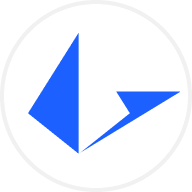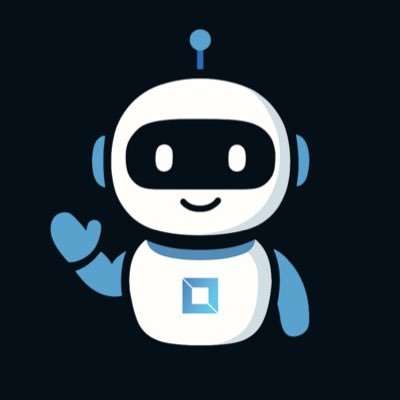Loopring price
in BRL

About Loopring
Loopring’s price performance
Loopring on socials
Guides

Loopring FAQ
Loopring is a Layer 2 solution that enables decentralized exchange services that offer quick and affordable crypto trading features. While this is Loopring's primary business, the project has broadened its scope. Loopring has evolved from a decentralized exchange-focused scaling solution to an ecosystem compatible with various blockchain applications, including NFT marketplaces.
Loopring optimizes transactions using zero-knowledge proofs, also known as ZK-rollups. ZK-rollups technology bundles transactions before submitting them for verification on the Ethereum blockchain's primary layer. Loopring can thus optimize transaction speeds while relying on the Ethereum blockchain's formidable security. At the same time, zero-knowledge provides additional privacy features. As a result, Loopring does not need to submit transaction information that can be linked back to users on the Ethereum blockchain.
Easily buy LRC tokens on the OKX cryptocurrency platform. Available trading pairs in the OKX spot trading terminal include LRC/USDT and LRC/USDC.
You can also buy LRC with over 99 fiat currencies by selecting the "Express buy" option. Other popular crypto tokens, such as Bitcoin (BTC), Ethereum (ETH), Tether (USDT), and USD Coin (USDC), are also available.
Swap your existing cryptocurrencies, including XRP (XRP), Cardano (ADA), Solana (SOL), and Chainlink (LINK), for LRC with zero fees and no price slippage by using OKX Convert.
To view the estimated real-time conversion prices between fiat currencies, such as the USD, EUR, GBP, and others, into LRC, visit the OKX Crypto Converter Calculator. OKX's high-liquidity crypto exchange ensures the best prices for your crypto purchases.
Dive deeper into Loopring
Loopring is a Layer 2 scaling protocol designed to optimize and facilitate building non-custodial, order book-based decentralized exchanges (DEX) and payment protocols on Ethereum. The project looks to eliminate the bottlenecks associated with cost and scalability often experienced by Ethereum users.
Loopring achieves this by building a secondary layer powered by ZK-rollups where transactions can be processed at a fraction of a cent and finalized faster than it would typically take to execute transactions on the Ethereum blockchain. By adopting the ZK-rollup technology, Loopring processes transactions in batches rather than entering each individually into the blockchain. This system not only enhances speed but also reduces transaction fees considerably.
Notably, Loopring's solution still relies on the security infrastructure of Ethereum. In other words, even though transactions are processed on a secondary layer, finality is achieved when such transactions are eventually recorded on Ethereum's blockchain. Another core feature is Loopring's decentralized nature. The protocol does not rely on centralized processes or infrastructures to function. As such, Loopring ensures that users control their funds at all times.
LRC is the native ERC-20 token of the Loopring protocol. It is primarily used to anchor the incentive-based economy that rewards users for contributing positively to the sustainability of the protocol and its in-house decentralized exchange.
Like most Layer 2 solutions, Loopring allows users to pay fees with its native coin. When a user completes a trade on Loopring, 20% of the associated transaction fee is set aside as the protocol fee. The accrued protocol fees are shared among liquidity providers and insurers of Loopring DEX. Liquidity providers are the users that deposit their holdings on the decentralized exchange to make liquidity available for other users to trade against.
On the other hand, insurers deposit their LRC tokens into Loopring's insurance fund as a safety net against unforeseen security incidents. Apart from the yield-generating system designed around LRC, holders can also use their tokens for governance. Since a DAO governs Loopring, users can join the decision-making process by holding LRC.
LRC price and tokenomics
At the time of writing, around $1.33 billion LRC tokens are in circulation. This makes up around 97% of the maximum supply of LRC capped at 1.37 billion tokens. In other words, no new LRC tokens are being supplied via mining or staking-based emission systems.
Around 600,000 LRC tokens have been burned or removed permanently from circulation. The remaining 43 million LRC tokens yet to be released into circulation are held by the DAO or staked by exchange operators to enable a sustainable trading platform on Loopring.
In 2021, Loopring launched a revised LRC tokenomics that reshuffled how tokens were distributed to different sets of network contributors. The previous tokenomics had a 70-20-10 sharing formula. 70% of the protocol fees went to stakers, 20% to the DAO, and the remaining 10% was burned. However, with the new tokenomics launched in 2021, the LRC tokenomics now utilizes an 80-10-10 sharing formula. 80% of the protocol fees are shared among liquidity providers, 10% is awarded to the DAO, and the remaining 10% funds the yield-earning initiative designed for insurers.
While the original tokenomics ensures that 10% of the earnings generated from protocol fees is burned, the new system leaves it to the DAO to determine the burning rate of LRC. The community members collectively decide how to spend the 10% allocated to the DAO. As such, they can burn part or all the funds available for spending.
Loopring adopts a deflationary model, meaning the LRC supply shrinks over time. Like all other cryptocurrency protocols running a deflationary token model, Loopring hopes that the continuous burning or reduction of the token supply will positively impact the value of LRC.
About the founders
Loopring was founded in 2017 by David Wang, a former Google and Boston Scientific lead software engineer, and Jay Zhou, a former Paypal employee. After the introduction of Loopring in 2017, the development team opted to conduct an initial coin offering (ICO) in August of the same year. At the end of the crowd sale, Loopring had raised $45 million. However, the team had to return 80% of the fund to investors due to the ICO crackdown imposed by China. The Loopring Foundation, the non-profit organization tasked with building and managing Loopring, used the remaining 20% to fund the development of the protocol.
Remarkably, Loopring has sealed several key partnerships with crypto and traditional organizations. For instance, the protocol collaborated with Chainlink in 2019 to implement Oracle integrations on Loopring V3. The first integration between Loopring and Chainlink enabled the LRC/ETH price feed for DEX users. Another key integration was announced in March 2022 when Loopring became the Layer 2 scaling platform powering GameStop's NFT marketplace. The platform officially went live in July 2022. Some prominent investors of Loopring include Consensus FinTech Group, Cosmos Capital, ChainFunder, Hash Capital, and Matrix CIB.
Loopring highlights
Loopring launched a VIP reward system aimed at market makers and high-volume traders late in 2021. This is similar to the reward model used by centralized exchanges to determine which users are eligible for discounts and rebates. The partnership with Gamestop is Loopring's biggest highlight in 2022, and arguably the most significant since the company's inception. The announcement of this partnership alone resulted in a 32% increase in the price of LRC.
The cost-effective minting feature launched in February 2022 is another example of Loopring's growing presence in the NFT market. Users can use this service to mint NFTs for less than $1. Loopring also entered the Metaverse in 2022, when it launched the beta version of Loopring HQ on Decentraland and held a virtual meetup to commemorate the occasion.
Disclaimer
OKX does not provide investment or asset recommendations. You should carefully consider whether trading or holding digital assets is suitable for you in light of your financial condition. Please consult your legal/tax/investment professional for questions about your specific circumstances. For further details, please refer to our Terms of Use and Risk Warning. By using the third-party website ("TPW"), you accept that any use of the TPW will be subject to and governed by the terms of the TPW. Unless expressly stated in writing, OKX and its affiliates (“OKX”) are not in any way associated with the owner or operator of the TPW. You agree that OKX is not responsible or liable for any loss, damage and any other consequences arising from your use of the TPW. Please be aware that using a TPW may result in a loss or diminution of your assets. Product may not be available in all jurisdictions.











